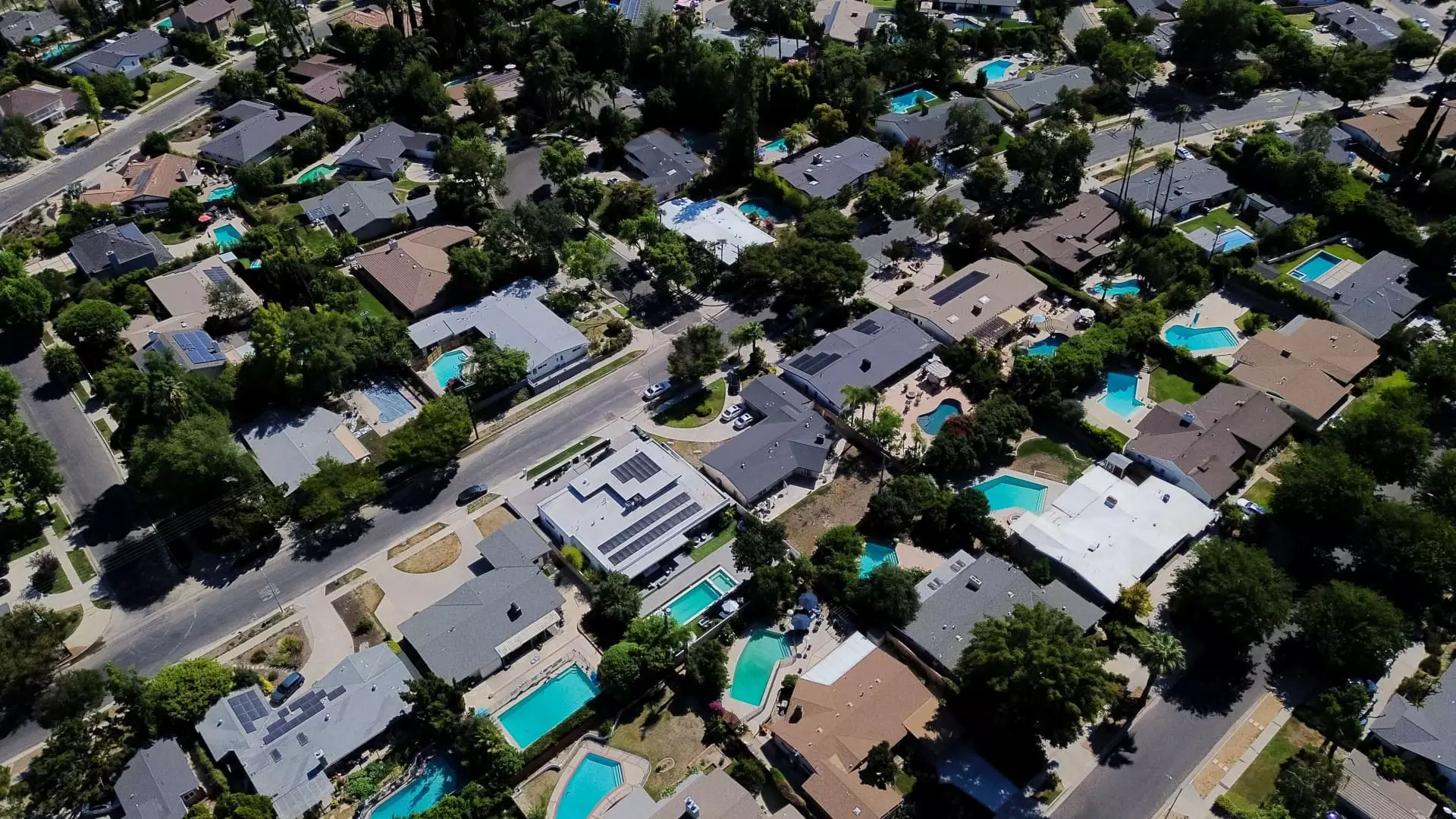The latest data on existing home sales paints a stark reality: a decline of 2.7% in June, falling short of optimistic forecasts and revealing a market struggling under the weight of economic uncertainty. While some may interpret this as a temporary slowdown, a deeper inspection exposes systemic issues that threaten long-term stability. The notion that the housing market is thriving is increasingly illusory; instead, it demonstrates a fragile equilibrium, heavily influenced by external economic shocks and policy shortcomings. The reality is that a confluence of high mortgage rates, limited supply, and stagnant wages has created a perfect storm that hinders genuine market renewal.
The fact that sales have remained flat compared to June 2024 underscores a troubling stagnation. Despite expectations of a minimal decline, the 2.7% drop indicates that even resilient markets cannot withstand sustained economic pressure. This isn’t mere seasonal fluctuation—it’s symptomatic of a deeper malaise. High mortgage rates, hovering around 6.8% to 6.9%, are acting as a choke point for potential homeowners, sidelining many eager first-timers from entering a market that’s already priced beyond their reach. This gap, coupled with an uneven economic recovery, exposes how inaccessible homeownership continues to be for many, especially when the very foundation of affordability is compromised.
Supply and Prices: The Divergence of Reality and Perception
While the supply of homes has increased by nearly 16% year over year, reaching 1.53 million units, this ostensibly positive development masks a more troubling reality: the market remains under-supplied relative to demand. A 4.7-month inventory at current sales rates is insufficient to balance the market, which still favors sellers. The persistent imbalance is evidenced by record-high median prices—$435,300 in June—marking yet another consecutive month of annual increases. This relentless climb in prices is driven by years of underbuilding and stagnation in construction activity. Homes are increasingly beyond the reach of typical buyers, especially first-timers, who now face an environment where their dreams of homeownership slip further from grasp each month.
The premium on scarce supply is evident in the premium prices on higher-end homes—those priced above $1 million jumped by 14%, reinforcing the skewed nature of the market. Meanwhile, affordable housing options—those below $100,000—are vanishing, dropping by 5% annually. This stark disparity accentuates the widening generational divide; young and first-time buyers are increasingly pushed to the margins, sidelined by relentless price growth and limited supply. The housing market, instead of being a pathway to stability, is becoming a barrier that entrenches inequality and prevents social mobility.
Market Dynamics and the Myth of a Strong Buyer Base
One of the more alarming signs is the decline in buyer activity—especially among first-timers, who now constitute just 30% of sales, a significant drop from the traditional 40%. This decline signals a fundamental erosion of market dynamism, driven by the twin forces of rising costs and stagnant wages. Meanwhile, the share of all-cash deals remains elevated at 29%, nearly a 50% increase from pre-pandemic levels, suggesting that the market is increasingly driven by cash-heavy investors rather than everyday families seeking stability.
Offers per listing have also declined slightly, with homes receiving on average just over two bids—down from nearly three a year earlier—indicating waning buyer enthusiasm or capacity. Longer time on the market—27 days versus 22 days last year—further illustrates how houses are lingering, caught in a web of hesitancy and affordability concerns. The narrative of a flourishing housing landscape becomes increasingly untenable when these indicators are considered collectively. The housing market isn’t a thriving marketplace but rather a manifestly distorted environment where high prices, limited entry points, and economic headwinds conspire to stall genuine growth and equity.
The current state of the housing market demands a sober reassessment of policy priorities. Instead of trumpeting superficially positive figures, policymakers and stakeholders must acknowledge that the true challenge lies in addressing fundamental issues—affordability, supply constraints, and economic disparities—that threaten to undermine long-term stability. Persistent high mortgage rates, underinvestment in housing construction, and capital-driven speculative activity are not signs of a healthy market—they are symptoms of systemic neglect. If the goal is to foster fairness, opportunity, and sustainable growth, a more intelligent and compassionate approach is essential. Otherwise, the illusion of a “resilient” housing sector risks collapsing under its own contradictions, leaving millions behind and deepening societal divides.


Leave a Reply